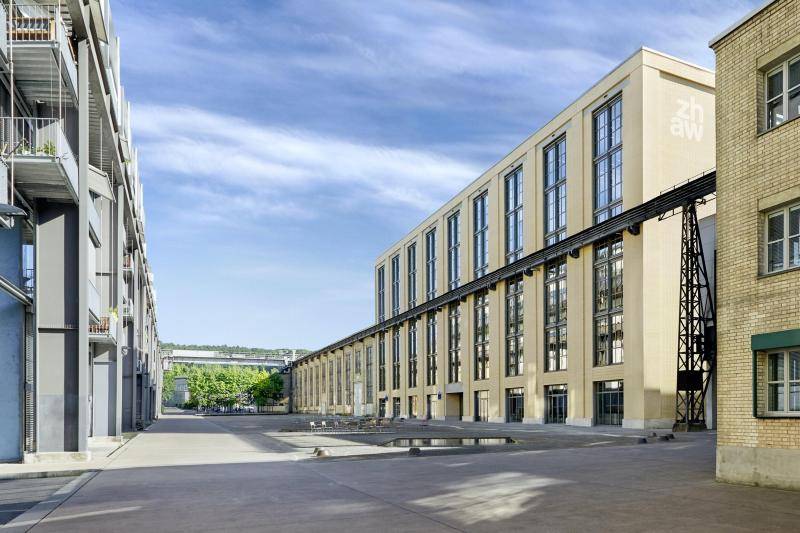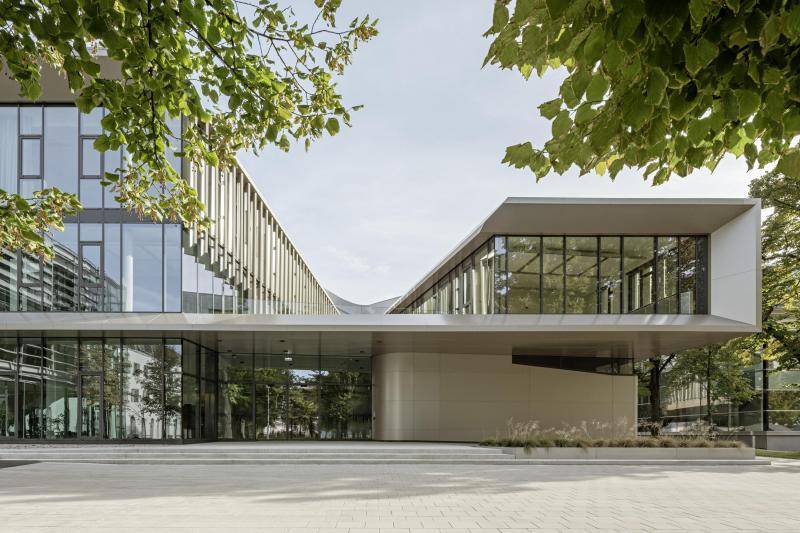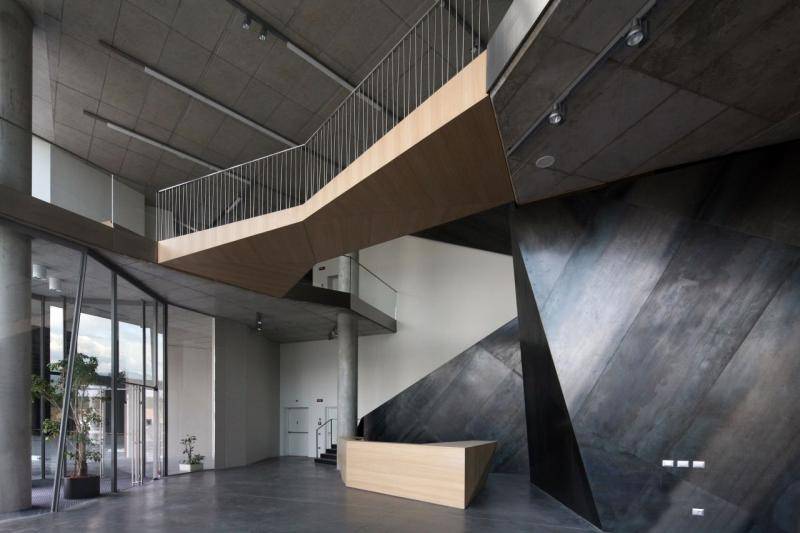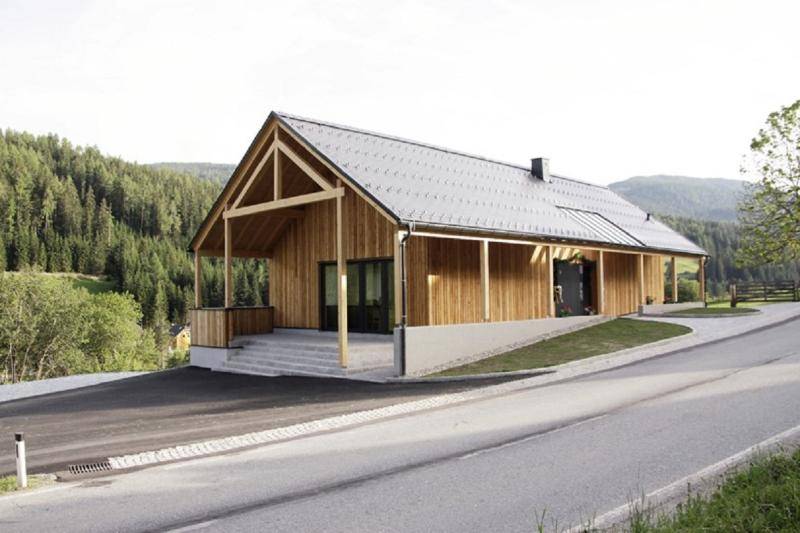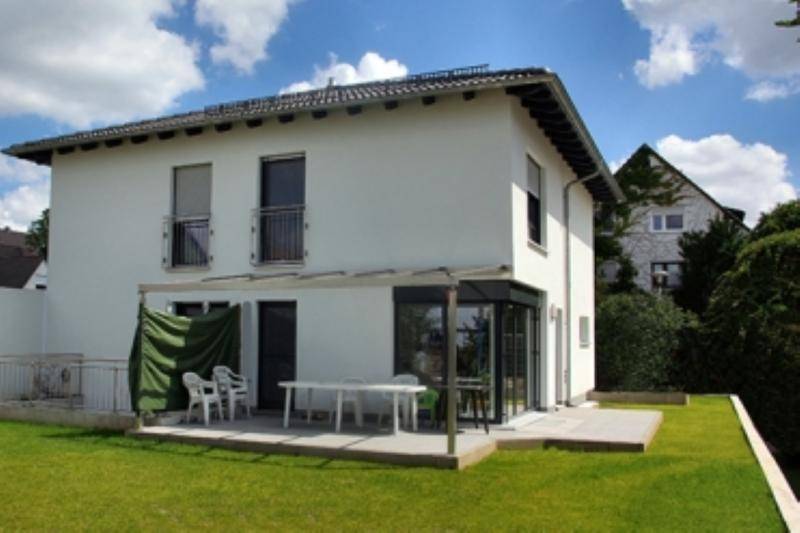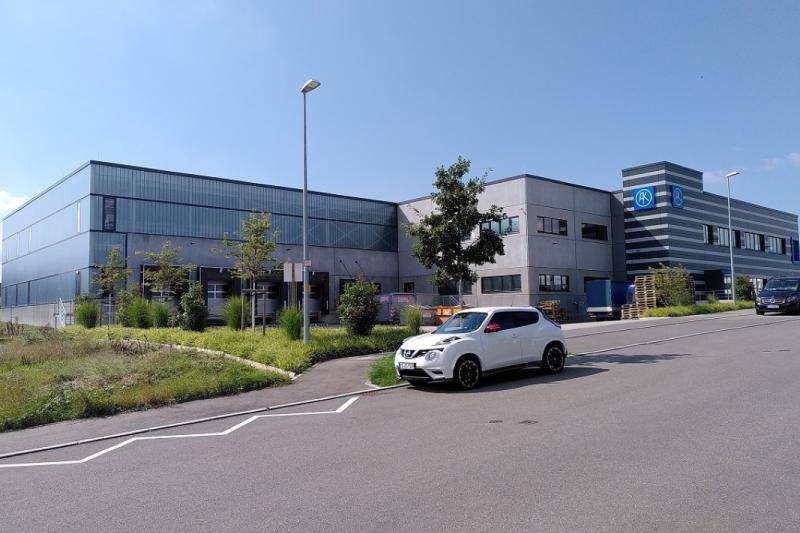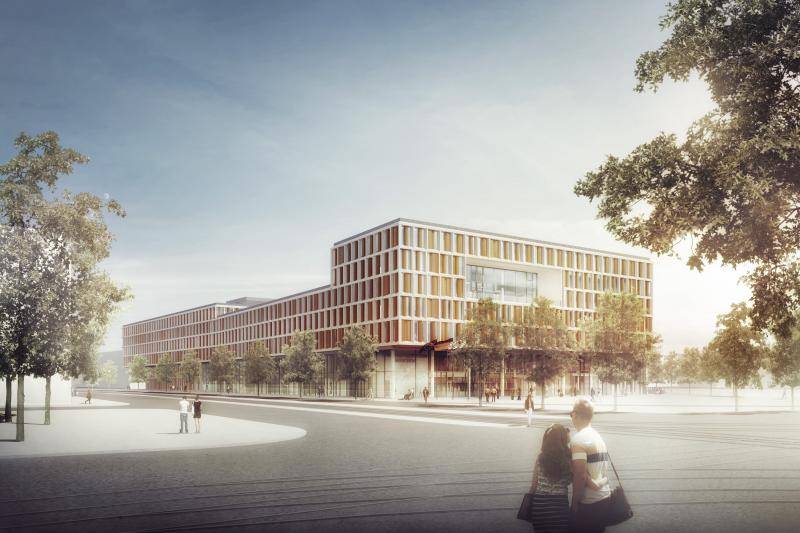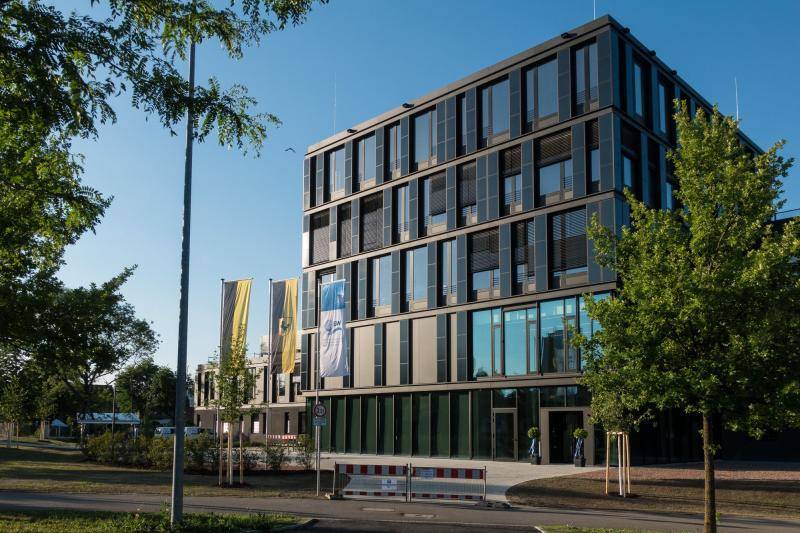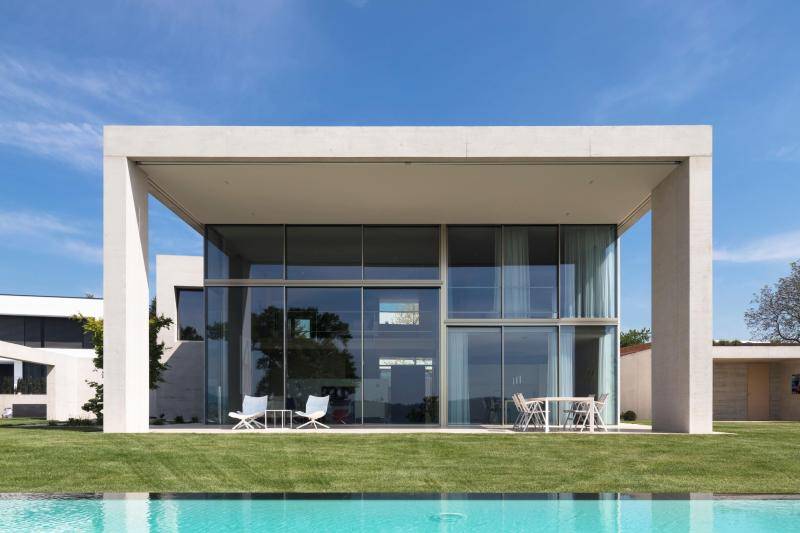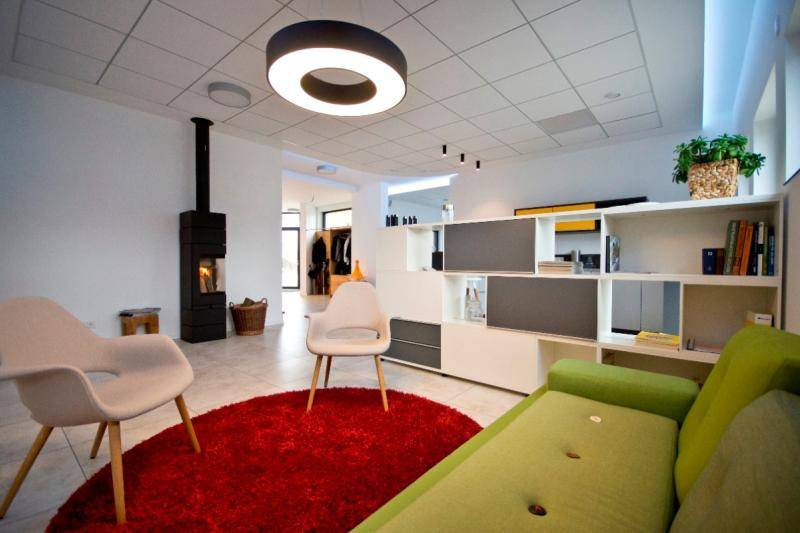Haus Adeline Favre
The Katharina Sulzer Square was the center of the foundries. It is characterized by the industrial character of the factory buildings made of yellow-baked bricks and the surrounding crane runway. The ZHAW University of Applied Sciences for Health was built on the footprint of the former Hall 52 and accentuates the historical appearance of the ensemble with its overheight volume.
Siska Immobilien AG
2020
Civil engineer: DSP Ingenieure & Planer AG
General contractor: Implenia Schweiz AG
Building physics: BWS Bauphysik AG
Electrical engineering: enerpeak
TAB system: Xtegrasol AG
Planning TAB:
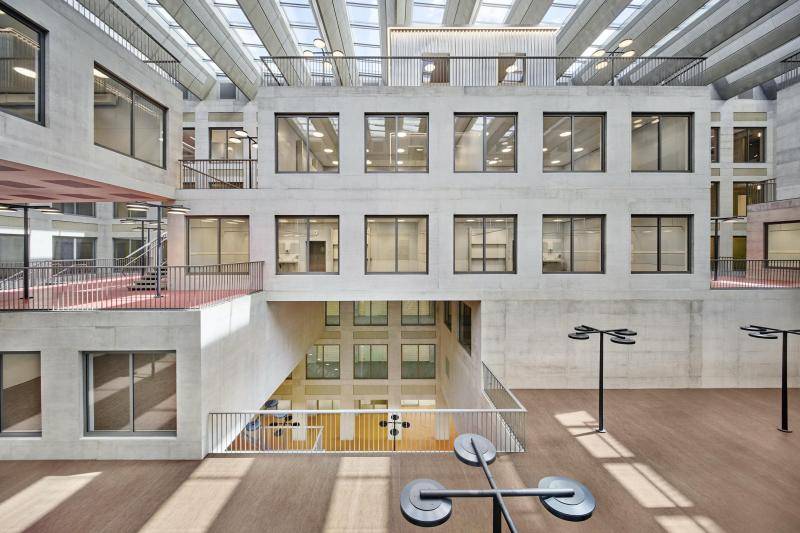
Since the school does not have its own outdoor space, this was compensated for inside with an atrium. A ring of circumferential galleries delimits the courtyard and, with its lattice-like structured interior façade, forms a counterpart to the monumental façade in the exterior space. Approximately 30 m long, prefabricated V-shaped concrete beams with skylights span the atrium. In the inner courtyard, lecture halls and practice rooms are stacked in an offset fashion, creating generous plazas and terraces that can be used as foyers and meeting zones as well as work and study areas. The staircases make it possible to experience the diverse spatial relationships. The atrium is designed like a covered outdoor space: Squares and terraces receive identity-creating light bodies with large candelabras and are equipped with outdoor furniture.
The ceilings are supported by the four staircases, the facades, corridor columns and by the cross-stacked walls of the rooms in the atrium. The dissolved wall slices in the courtyard are designed as Vierendeel beams. The cross-stacking of the wall disks has the effect that the spans of the superimposed floor slabs or the suspended floor slabs below them are reduced and can therefore be designed with slack reinforcement. The slabs do not only assume an exclusively static function.
In order to reduce gray energy, a certified Portland composite cement, which also consists of burnt slate and high-quality limestone, is used. In addition, floating underlayment flooring was not used on the upper floors. A linoleum floor covering with impact sound insulation (18 dB) on the back was laid on the concrete ceiling. The thermally activated concrete ceilings are used for heating and cooling. The Sorp 10 and tabsilent acoustic inlays visibly structure the soffits of the ceilings. The goals of the SIA Energy Efficiency Path 2040 are achieved.
